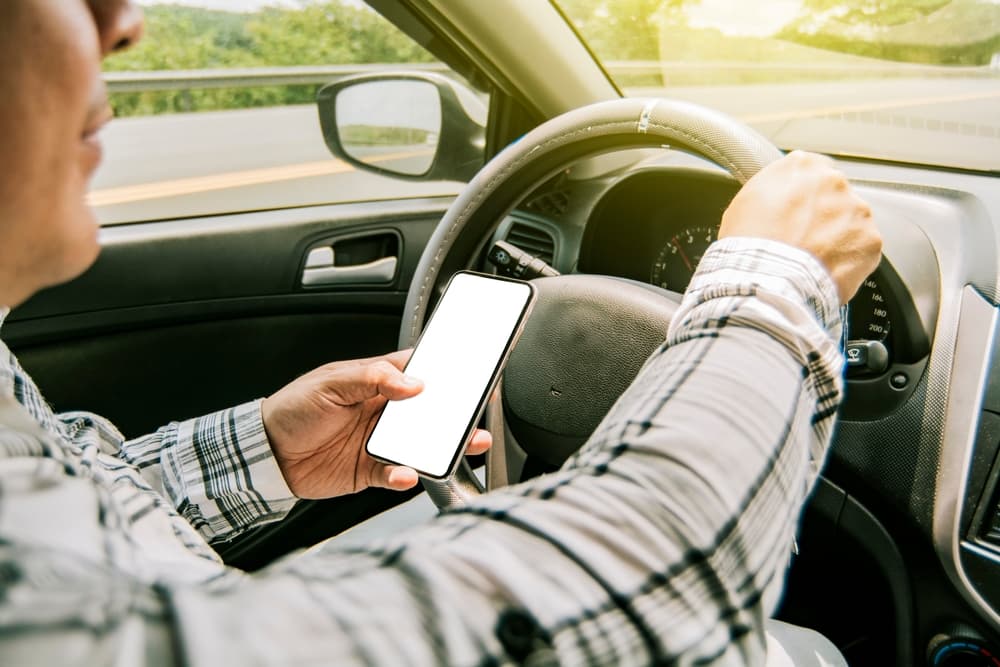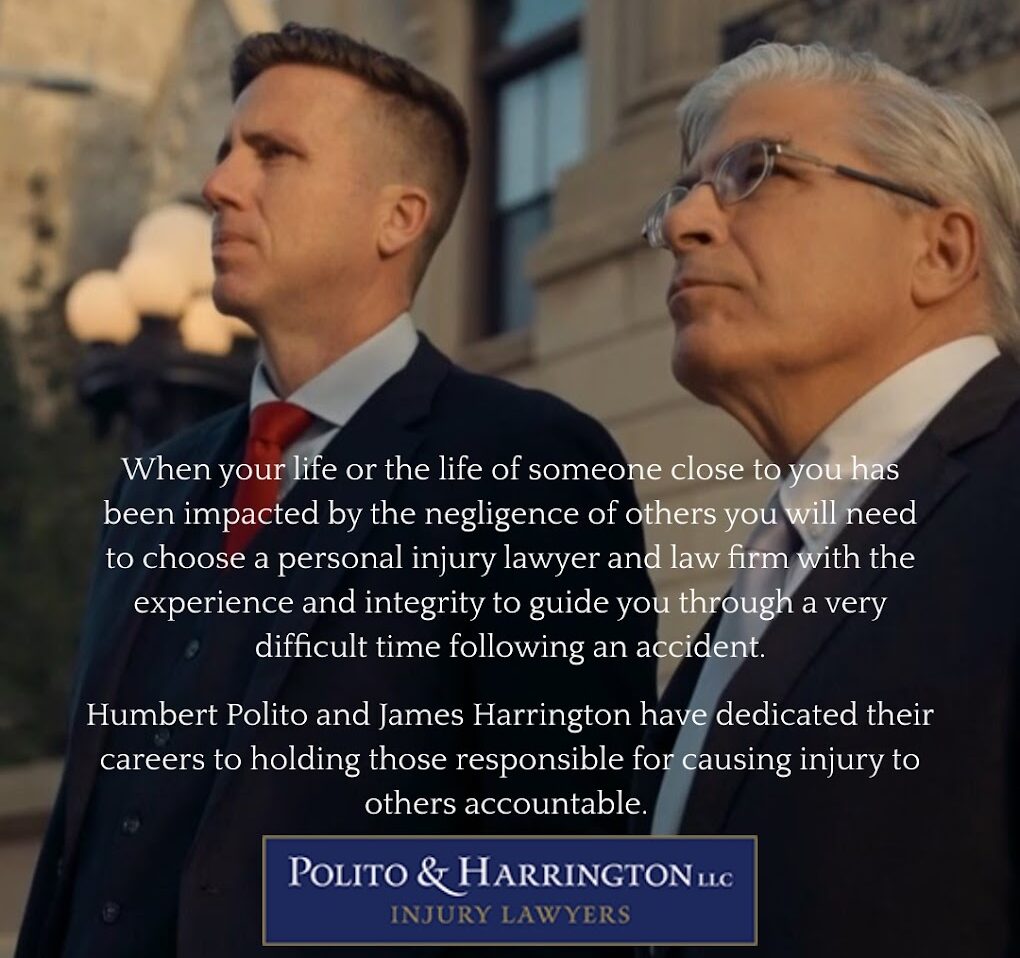
Distracted driving is among the leading causes of car accidents. According to the National Highway Traffic Safety Administration, distracted driving is the principal factor in about eight percent of fatal traffic accidents, 14 percent of injury-causing accidents, and 13 percent of all reported crashes.
In one recent year, distracted driving accidents killed 3,522 people and injured over 362,000 more. And in today’s fast-paced, constantly connected society, distraction seems likely to remain a serious threat for the foreseeable future. Avoid accidents caused by distracted driving. Get legal help from our New London car accident attorney. Expert assistance to protect your rights and well-being.
[lwptoc title=”Types of Distractions While Driving Guide”]
With the prevalence of cell phones and other technological features of modern cars, drivers have more distractions behind the wheel than ever before. Distractions interfere with drivers in three primary ways: physically, visually, and mentally.
Physical distractions require drivers to take their hands off the wheel and gear shift. Distractions that tempt drivers to use their hands for tasks unrelated to driving compromise their ability to control their vehicle, which can lead to an accident in the event of an emergency.
Visual distractions take a driver’s eyes off the road. Drivers who don’t pay careful attention to the road around them might not see a potential hazard until it becomes too late to avoid a collision.
Mental distractions cause drivers to take their attention off the task of driving. Drivers might think about things other than the task of driving or simply daydream or “zone out.”
Some distractions combine two or even all three of these types. For example, eating or drinking causes a driver to take one or both hands off the wheel and part of their attention off the task of driving. Using a cell phone to send messages or browse the internet can cause a driver to become physically, visually, and mentally distracted as they interact with the phone, read messages, and consider their contents.
Cell phone use is one of the leading causes of distraction on today’s roadways. Unfortunately, some drivers see no harm in reading or sending a “quick” text or using the internet to look up an address or get directions. However, even brief distractions caused by cell phones can lead to devastating accidents.
In the time it takes a driver to read a text message, their vehicle can travel the distance of a football field at highway speeds. While distracted by their cell phone, a driver might not notice a braking vehicle or stop sign/red light ahead of them, with potentially devastating consequences.
Some drivers choose to eat and drink behind the wheel, especially during the morning, when the commute to work or school cuts into their breakfast. However, eating and drinking require drivers to take one or both hands off the wheel.
Drivers might also take their eyes off the road to reach for food or to put a drink back in the cupholder. Those who become distracted while eating or drinking are more likely to cause accidents, particularly rear-end collisions.
Newer vehicles have increasingly complex technology built into them. While cars used to have a couple of knobs or levers to control the radio and climate control, today’s cars have infotainment systems with large touch screens that require drivers to navigate through layered menus to access numerous vehicle functions.
Some vehicles have infotainment systems that allow drivers to access the internet or to search for destinations like restaurants, hotels, or gas stations.
As a result, drivers may spend critical seconds adjusting radio or climate control settings, setting up turn-by-turn directions, or using the GPS system to search for destinations or addresses.
Even a momentary distraction can translate into hundreds of yards of distance at highway speeds. A driver may not see and fail to respond to an impending hazard while looking down at their dashboard.
A driver who reaches for an object while on the move must take a hand off the wheel to reach it, compromising their control of their vehicle if an emergency or hazard appears.
Worse, some drivers distract themselves even further by reaching for objects located somewhere that require them to take both hands off the wheel or their vision off the road, such as looking in the center console, glovebox, or behind the front seats.
A distracted driver rummaging around for something in the cab might miss stopped traffic, a red light/stop sign, or another hazard they could avoid if they had kept their focus on the road.
As is the case with eating behind the wheel, drivers on the run sometimes make the irresponsible decision to combine their commute with their grooming routine, especially during the morning drive or on the way to a social event.
However, grooming activities like shaving or applying makeup are a three-fold distraction, combining physical, visual, and mental tasks. The driver performing them will need to hold an electric razor or makeup applicator, look at a side or rear-view mirror instead of the road, and focus on the task of trimming their beard or applying makeup.
Passengers or pets in the car can also distract drivers, who may turn to look at the person talking or to interact with the animal. An in-depth or emotional conversation can also mentally distract a driver even if they keep their vision on the road. Pets can distract drivers by getting carsick or attempting to climb into the driver’s lap.
Young and inexperienced drivers are more prone to causing accidents due to distractions from fellow passengers. As new drivers continue to learn and get used to driving, they should remain focused on the road and not give in to distractions around them.
For this reason, many states restrict teen drivers’ ability to transport passengers by limiting the number of passengers or only allowing teen drivers to have family members in the vehicle.

James M. Harrington, Car Accident Lawyer
Distracted driving kills thousands of people and injures hundreds of thousands more nationwide each year. If you’ve suffered injuries in an accident caused by a distracted motorist, you could have grounds to recover compensation for your injuries and losses.
An experienced New London personal injury lawyer might help you secure the financial resources you need for your recovery by investigating the crash, obtaining evidence to prove the other driver caused the accident due to a distraction, documenting your expenses or losses, and pursuing your insurance or legal claims.
We are committed to provide personalized attention to each and every client’s case – no matter how large or small– because that is each client’s only case. We are proud of our firm’s reputation of combining integrity and compassion with an unflinching dedication to getting the right result. We will do what we say.
